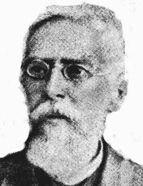

From two columns from the first phase of the newspaper, with few modifications, were published the texts: Acayaca 1729 (1866), in which he mixed fictional romance and history based on an indigenous legend, and Memórias do Districto Diamantino da Comarca do Serro Frio [Memoirs of the Diamantino District of the Comarca do Serro Frio] (1868), Joaquim Felício dos Santos' most important contribution to historiography. In this work, the author examines the actions of the Portuguese Crown in controlling the extraction of resources in the diamond region from the 18th to the early 19th century.
In addition to using documents from public archives (regulations, communications, appointments, accounting records, criminal enquiries, prison records, and separation proceedings), Joaquim Felício dos Santos drew on pamphlets and oral sources to shape his writing. According to Joaquim Ribeiro’s preface to the third edition, his style has been likened to that of the French historian Augustin Thierry Memórias ... [Memoirs...] (1956). These traits ensured that the pages of the book also gave voice to actors from the lower social strata of Diamantinense society. The work explores local customs and conflicts, offering insights into the forms of resistance employed by the most impoverished sectors by portraying popular and marginal figures, such as small-scale miners, often black, who lived on the fringes of the law by extracting precious stones.
One of the figures depicted in the book is Francisca da Silva, a black former slave who rose to prominence in diamond society through her romantic relationship with João Fernandes de Oliveira, the wealthiest man in Brazil at the time and a prominent diamond contractor. Xica da Silva, whose descendants hired the lawyer Joaquim Felício dos Santos to settle property disputes, became one of the best-known figures in Brazilian literature, cinema, and television dramas from the 20th century onwards through various authors.
This work is financed by national funds through FCT - Foundation for Science and Technology, I.P, in the scope of the projects UIDB/04311/2020 and UIDP/04311/2020.
